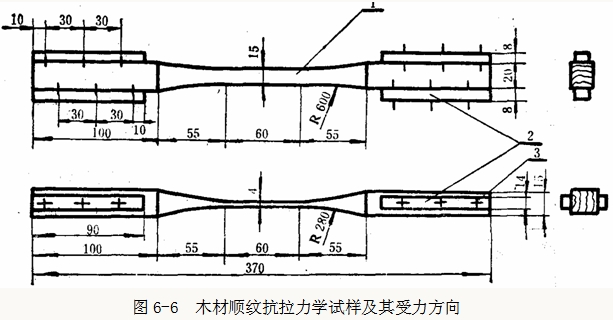Wood tensile strength test method - Database & Sql Blog Articles
The tensile strength of wood refers to its maximum ability to resist pulling forces along the grain direction. This property is crucial in determining the structural integrity and durability of wooden materials. The average tensile strength of wood ranges between 117.7 MPa and 147.1 MPa, which is approximately 2 to 3 times higher than its compressive strength along the grain. In practical applications, wood rarely fails due to direct tearing, as it typically withstands high loads before showing signs of damage.
When wood fails under tension, the primary cause is shear stress between the longitudinal microfibrils. These microfibrils are held together by strong CF and CO bonds, resulting in minimal deformation during failure—usually less than 1% to 3%. Despite this low deformation, the full tensile strength of the microfibrils is not always achieved because the shear strength of wood is relatively low, often only 6% to 10% of the tensile strength. When stretched along the grain, the failure occurs due to sliding between microfibrils, leading to a jagged or finely cracked fracture surface. The shape of the break depends on the ratio of the wood's tensile strength to its shear strength.
Generally, woods with a higher tensile-to-shear strength ratio tend to fail by shearing at weak points, producing irregular and jagged surfaces. However, decayed wood or tropical heartwood may show different characteristics. Decay can weaken the structure by breaking down cellulose and increasing sensitivity to humidity, significantly reducing tensile strength. In such cases, the fracture may appear flat or exhibit zigzag patterns, indicating more direct microfibril failure rather than shear-induced damage.

Measuring the tensile strength of wood is challenging due to the difficulty in preparing samples and the tendency for distortion during testing. The design of the testing clamps and the curvature at the ends of the specimen also play a significant role in the results. Since the tensile strength of wood along the grain is comparable to its flexural strength, engineers often use flexural strength values as an alternative in design calculations.
In China, national standards specify the dimensions and shapes of tensile specimens for wood. For softwoods, a hardwood clamp measuring 90 x 14 x 8 mm is used, with the sample secured using glue or wood screws on the narrow sides. Testing is typically conducted using a machine equipped with automatic alignment and tensioning clamps, applying force at a uniform rate until the sample breaks within 1.6 to 2.0 minutes.
The tensile strength of wood along the grain can be calculated using the formula:
Σw = P / ab
Where:
- P – Maximum load in Newtons (N)
- a, b – Cross-sectional area of the specimen in square centimeters (cm²)
- W – Moisture content of the wood at the time of testing, in percentage (%)
This formula helps determine the mechanical performance of wood under tensile conditions, providing essential data for engineering and construction applications. Understanding these properties allows for better material selection and improved structural design in various industries.
Shenzhen ChengRong Technology Co.,Ltd. , https://www.laptopstandsupplier.com
